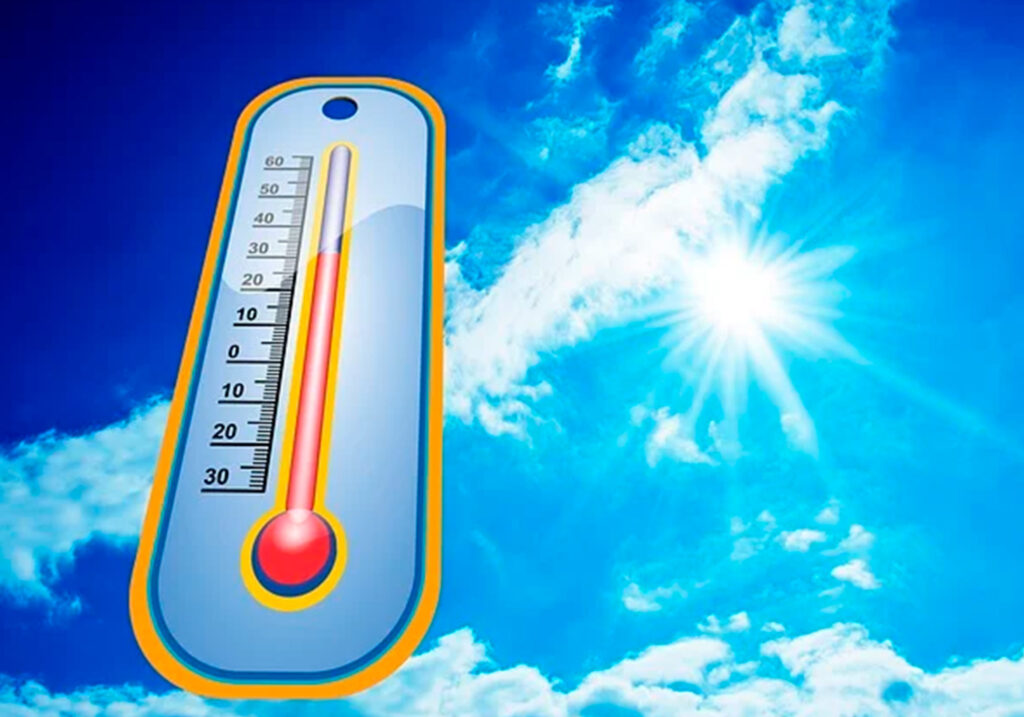We have all been taught in school that metals are good conductors of heat and electricity. We sometimes find out the hard way that we must avoid steel when it is baked under the sun whenever we accidentally touch them.
Metal barns are widely used in agriculture, storage, and even residential spaces due to their durability, affordability, and low maintenance requirements. However, one of the most common concerns about metal barns is whether they become excessively hot inside, especially during the summer months. Since metal is a strong conductor of heat, many wonder if metal barns are uncomfortable environments for animals, equipment, and even people.
Understanding how metal barns react to temperature fluctuations and exploring ways to regulate indoor climate is essential for maximizing their usability. This article will examine whether metal barns get hot inside, the factors that contribute to heat buildup, and effective ways to keep them cool.
Why is steel a good conductor of heat?
Steel is a good conductor of heat because of its metallic structure and the movement of free electrons within it. Like other metals, steel has a crystalline structure in which atoms are arranged in a closely packed pattern. The electrons in metal atoms are not tightly bound to any specific nucleus, which allows them to move freely throughout the material. When heat is applied to one part of the steel, these free electrons quickly transfer energy by colliding with other electrons and atoms, distributing heat efficiently across the entire metal surface.
Another reason steel conducts heat well is its high density and atomic bonding. The strong metallic bonds in steel allow for rapid vibration and movement of energy between atoms, which enhances thermal conductivity. Although steel is not as conductive as metals like copper or aluminum, it still transfers heat effectively compared to non-metallic materials. This property makes steel useful in applications where heat needs to be transferred or distributed, such as in cookware, industrial machinery, and structural components exposed to high temperatures.
However, the conductivity of steel can vary depending on its composition. Different alloys of steel contain varying amounts of elements like carbon, chromium, and nickel, which can influence its thermal conductivity. Stainless steel, for example, has lower thermal conductivity than plain carbon steel due to the presence of chromium and nickel, which disrupt the free movement of electrons. Despite these variations, steel remains a reliable conductor of heat, making it a versatile material in engineering and construction.
Do Metal Barns Get Hot Inside?
Yes, metal barns can become hot inside, especially in direct sunlight and warm climates. Metal absorbs and transfers heat quickly, meaning that without proper ventilation, insulation, and cooling methods, temperatures inside a metal barn can rise significantly. However, whether or not a metal barn becomes unbearably hot depends on several factors, including location, design, insulation, and ventilation.
In hot climates, metal barns that lack proper insulation or airflow can feel like an oven during the peak summer months. The heat absorbed by the metal exterior transfers to the interior, creating a greenhouse effect where temperatures rise beyond comfortable levels. This can pose challenges for livestock, stored equipment, and any individuals working inside the barn.
Despite these challenges, metal barns can be designed to remain cool, even in hot conditions. By implementing effective heat management strategies, barn owners can create a comfortable and functional space without suffering from extreme heat.
Factors That Contribute to Heat Buildup in Metal Barns
Heat Absorption by Metal Surfaces
Metal surfaces absorb solar radiation quickly, causing the temperature inside a metal barn to increase rapidly. This effect is most pronounced in barns with darker-colored roofs or walls, as dark colors absorb more heat compared to lighter shades. Without barriers to prevent heat transfer, the metal barn can become excessively warm during the day.
Poor Ventilation
One of the biggest contributors to heat retention in metal barns is inadequate ventilation. If hot air is trapped inside with no way to escape, the temperature continues to rise. Natural airflow helps regulate temperature, but barns without sufficient vents, windows, or fans can become stagnant and uncomfortable.
Lack of Insulation
Insulation plays a crucial role in maintaining a stable temperature inside a metal barn. Without insulation, the metal walls and roof conduct heat directly into the interior, making it difficult to keep the space cool. Insulated barns retain cooler temperatures for longer periods, preventing extreme fluctuations between day and night.
Geographic Location and Climate
The location of a metal barn significantly impacts its internal temperature. In hot and humid regions, barns without cooling measures will experience more severe heat buildup. On the other hand, barns in temperate or cooler climates may not face the same challenges.
Roof and Wall Design
The design of a metal barn, including roof pitch, wall height, and openings, influences how heat is managed. A low-pitched roof traps heat closer to the ground, while a high-pitched roof allows hot air to rise and escape more easily. Well-placed openings, such as ridge vents or large doors, can promote better airflow and reduce heat retention.
How to Keep a Metal Barn Cool
Choosing the Right Color and Coating
One of the simplest ways to reduce heat absorption in a metal barn is by selecting the right color and coating for the exterior. Lighter colors such as white, beige, or light gray reflect more sunlight, keeping the barn cooler compared to darker colors that absorb heat.
Reflective coatings, also known as cool roof coatings, are designed to reduce heat absorption by reflecting sunlight away from the structure. These coatings can significantly lower the internal temperature of a metal barn.
Proper Ventilation for Air Circulation
Ventilation is essential for preventing heat buildup inside a metal barn. By allowing hot air to escape and bringing in cooler air, ventilation helps regulate temperature and improve air quality. There are several effective ways to enhance ventilation in a metal barn:
- Ridge Vents: These vents run along the peak of the roof, allowing hot air to escape naturally.
- Gable Vents: Positioned on the sides of the barn, these vents encourage cross-ventilation.
- Cupolas: A decorative yet functional feature that helps release hot air from the roof.
- Large Windows and Doors: Keeping doors and windows open allows fresh air to circulate throughout the barn.
- Exhaust Fans: Installing industrial fans or exhaust systems can actively remove hot air and bring in cooler air.
A well-ventilated barn prevents heat from becoming trapped, creating a more comfortable environment for livestock, equipment, and workers.
Installing Insulation to Regulate Temperature
Insulation is one of the most effective ways to maintain a stable temperature inside a metal barn. By adding insulation to the walls and roof, heat transfer is minimized, keeping the interior cooler in summer and warmer in winter. Several types of insulation can be used in metal barns:
- Spray Foam Insulation: Provides an airtight seal and excellent temperature control.
- Fiberglass Batts: A common and cost-effective option for metal barns.
- Reflective Foil Insulation: Reduces radiant heat transfer by reflecting sunlight away from the barn.
The choice of insulation depends on the climate, budget, and intended use of the barn. Insulating a metal barn significantly reduces temperature fluctuations and improves overall comfort.
Adding Shade and External Cooling Measures
Providing shade around a metal barn helps reduce direct heat exposure. Planting trees, installing awnings, or using shade cloths can lower the temperature inside the barn. Positioning the barn strategically, such as facing it away from direct sunlight during the hottest parts of the day, can also help minimize heat absorption.
For additional cooling, misting systems or evaporative coolers can be installed to lower indoor temperatures. These systems use fine water droplets to cool the air, making the environment more comfortable for animals and workers.
Using Thermal Mass to Stabilize Temperature
Thermal mass materials such as concrete, brick, or stone can help stabilize temperature by absorbing and slowly releasing heat. Incorporating these materials into the barn’s foundation or interior walls reduces extreme temperature swings.
A concrete floor, for example, stays cooler than a metal or wood floor, providing a comfortable surface for livestock or workers in hot weather.
Are Metal Barns Too Hot for Livestock?
Many farmers and ranchers use metal barns to house livestock, but concerns about excessive heat can impact animal well-being. Livestock are sensitive to high temperatures, and prolonged exposure to heat can lead to stress, dehydration, and health issues.
Keeping livestock comfortable in a metal barn requires a combination of ventilation, insulation, and cooling strategies. Fans, misting systems, and shaded outdoor areas help regulate temperatures and prevent heat stress in animals. Providing fresh water, adequate bedding, and proper airflow ensures a healthier and safer environment for livestock.
Conclusion
While metal barns can become hot inside due to their ability to absorb and transfer heat, they do not have to be uncomfortable or unusable. By implementing smart design choices such as proper insulation, ventilation, and reflective coatings, the internal temperature of a metal barn can be significantly reduced.
Choosing lighter colors, adding shade, and installing cooling systems all contribute to a more comfortable environment. Whether the barn is used for livestock, equipment storage, or as a workspace, maintaining a cool and well-ventilated space enhances functionality and longevity.
With the right planning and modifications, metal barns can remain practical, comfortable, and efficient in both hot and cold weather conditions.

